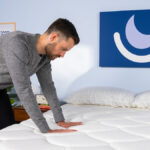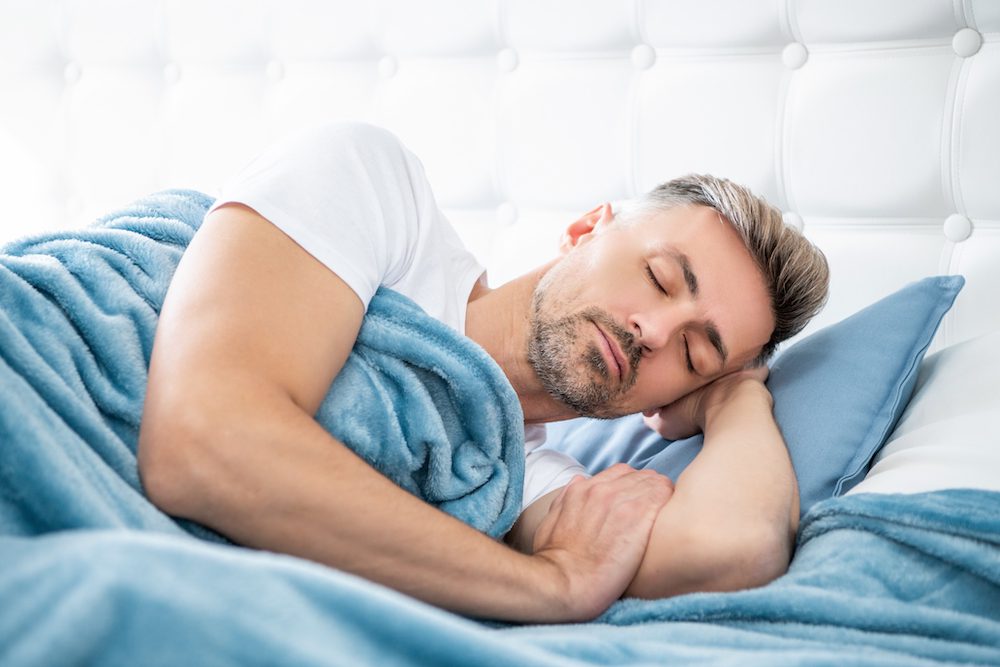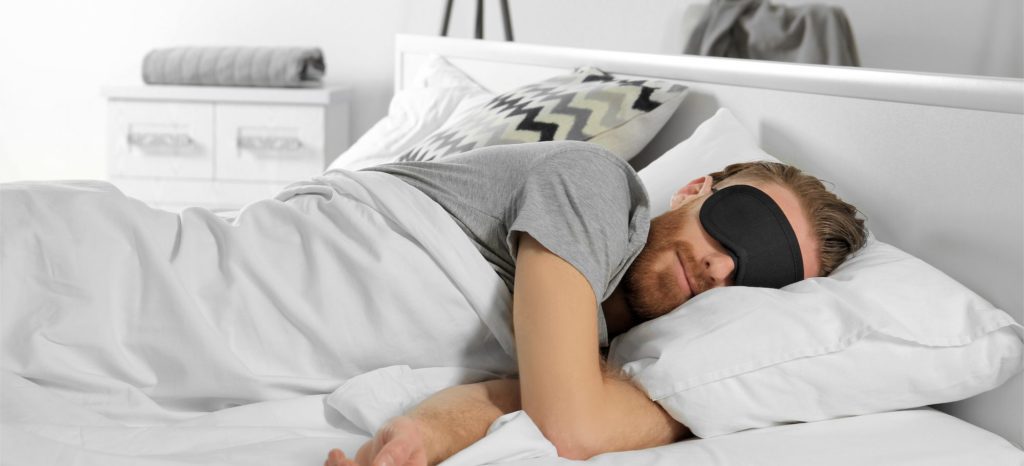The military sleep method is a technique designed to help people fall asleep quickly anywhere, anytime. It incorporates several relaxation techniques, based on the idea that teaching people to quickly relax their body and mind can help them learn to fall asleep in tense or difficult situations.
We give you a run-down of the military sleep method, discuss whether it’s an effective solution for falling asleep fast, and provide additional science-backed tips to help you get the sleep you need.
How Does the Military Sleep Method Work?
While there is no data to support the military sleep method or evidence that this technique is actually used by the military, the military sleep method is a step-by-step process designed to reduce tension and relax the body in preparation for sleep:
- Start by closing your eyes, slowing down your breathing, and focusing on relaxing the muscles in your forehead, scalp, and face. Relax the tongue and lips and think about letting them hang loose.
- As you begin to relax, shift your focus to the muscles of the chest. Take a deep breath, hold it for a moment, and exhale while imagining that you’re releasing all of the tension in your body.
- Repeat this process in the arms, relaxing each muscle one at a time.
- As your upper body continues to become more relaxed, think about the word “calm”. Mentally repeat this word to yourself, beginning to create a connection between the word and the sense of relaxation in your upper body.
- While repeating the word “calm,” begin to shift your focus to your lower body, relaxing your thighs, then your calves, ankles, and feet.
- Once you’ve relaxed your entire body, conjure an image of yourself within a relaxing scene. Perhaps you’re lying in a canoe on a calm lake with a blue sky. Continue to repeat the word “calm.”
- If your mind is not yet clear of active thoughts, the final step is to silently repeat the words “don’t think” for ten seconds while concentrating on clearing thoughts out of your mind.
Is the Military Sleep Method Effective?
Although the military sleep method is commonly found online, there is limited research into its effectiveness. Despite this limitation, many of the steps involved in the military sleep method are similar to techniques that experts commonly recommend to help people improve their sleep.
- Progressive Muscle Relaxation: Progressive muscle relaxation is a technique in which a person progressively tenses and relaxes groups of muscles in their body. This technique may help people with insomnia as well as those with anxiety, headaches, and high blood pressure.
- Autogenic Training: Similar to the self-talk used in the military sleep method, autogenic training involves using calming phrases to relax the body. Research supports the use of autogenic training for sleep issues, tension, pain, and a wide variety of other health problems.
- Breathing Techniques: There are many breathing techniques that can be used to help a person relax. Focusing on taking slow and deep breaths encourages the body to release stress and fall asleep.
- Visualizations: Visualizations can be a helpful way to calm down and ease into sleep. Some people find it helpful to engage their senses during visualizations. For example, they might imagine the warmth of the sun on their face or the sound of waves lapping at a shore.
Other Ways to Fall Asleep
The military sleep method is one way to improve your sleep. Other methods often involve developing healthy sleep hygiene, which are habits related to sleep that can make it easier or more difficult to fall and stay asleep.
- Stick to a Schedule: It can be difficult for the body to get used to inconsistent sleep patterns. Setting a fixed bedtime and wake time every day of the week can help combat many sleep issues.
- Watch Your Diet: Limit the amount of caffeine, nicotine, and alcohol you consume during the afternoon and evening, as each of these substances can interfere with sleep. Also, keep snacks near bedtime small and light to avoid indigestion.
- Engage in Sleep-Promoting Daytime Activities: During the daytime, try to get at least 30 minutes of sunlight and 30 minutes of exercise. Be sure to reduce light exposure and vigorous activity several hours before it’s time to sleep.
- Enhance Your Sleep Environment: When possible, design your sleep space to facilitate rest and relaxation. A good environment for sleep is comfortable and free from excessive noise and light. Try to keep your sleep space at a cool temperature.
- Find Ways to Wind Down: Whether using the military sleep method or another technique, finding ways to relax before bed can help you get better sleep. Try a variety of activities, like reading, listening to music, or meditating, and see what works for you.
If you have persistent trouble falling or staying asleep, it’s also important to check in with your doctor or another health care provider. Getting the right amount of quality sleep is vital to feeling your best, and a doctor can help you get to the bottom of sleep problems.
References
Ask the Sleep Doctor
Have questions about sleep? Submit them here! We use your questions to help us decide topics for articles, videos, and newsletters. We try to answer as many questions as possible. You can also send us an email. Please note, we cannot provide specific medical advice, and always recommend you contact your doctor for any medical matters.


